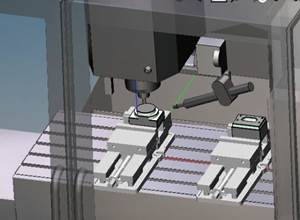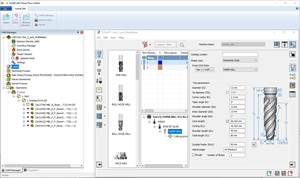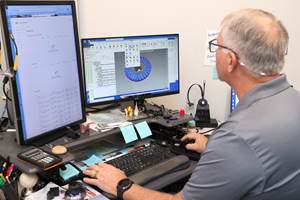CAM Software Makes Responsiveness A Cash Crop
This company provides design and engineering services to oil drillers, cell phone service providers, companies that make clean water systems and any other business looking for effective problem-solving done at breakneck speed.
Share







Takumi USA
Featured Content
View MoreLocated outside Dallas in Lewisville, Texas, The Cable Farm provides design and engineering services to oil drillers, cell phone service providers, companies that make clean water systems and any other business looking for effective problem-solving done at breakneck speed.
A year ago, the 24-employee company looked to enhance its quick-response capacity in one area—manufacturing. "Like every design facility, we had good relationships with machine shops," company founder Matt Merklein recalls, "but jobs were taking too long to produce. And rush jobs were very costly. We wanted the speed and control of vertical integration." The company created in-house manufacturing capabilities with the addition of a vertical milling center. The machine included a bonus that would prove itself well suited to The Cable Farm's work style: Gibbs SFP, a control-resident version of GibbsCAM CNC programming software from Gibbs and Associates (Moorpark, California). Designed specifically for the shop floor and created for in-control use on PC-based controls, Gibbs SFP allows a user to import CAD models and develop CAM programs in a graphical (non-G code) user interface at the machine controller.
The ease of learning and ease of use of Gibbs SFP was said to quickly prove itself. "I didn't even know what a machine could do when I bought that VMC," Mr. Merklein smiles. "I was impressed with the way Gibbs made everything so simple. You answered a few prompts, pressed a button, and the machine began to cut. To us, it was invaluable."
In 2 months, demand for the VMC had grown to the point where The Cable Farm hired a veteran machinist, Mike James, to handle programming and machining. Though Mr. James had never used GibbsCAM products before, he was quickly brought up to speed and was delighted at the software's process-based, machinist-friendly features. "When you import the file, it comes through clean," he says, "even with complicated CAD programs. I haven't found any files that GibbsCAM can't handle. Once the file is in, all you do is choose your tool, choose your process, click on the items you want to machine, and go. It's fast and uncomplicated. It helps me beat the clock."
Not long after Mr. James' arrival, The Cable Farm added a lathe to its growing machine shop, and with it the company upgraded its NC programming with an off-line seat of Virtual Gibbs SolidSurfacer with turning and advanced milling options. This version of GibbsCAM provides integrated manufacturing modeling and three-axis machining of surface and solid models. In addition to allowing The Cable Farm to program its mill and lathe from a nearby PC, SolidSurfacer's abilities to perform 3D solid modeling provided the company with a new sales tool.
"We've always dazzled our customers with our designs," says Mr. Merklein. "Now I have something else to dazzle them with. I bring them in to see the part we designed, and then I show it in 3D format, displayed in GibbsCAM, as the machinist is previewing the tool path. This just blows them away."
For Mike James, 3D models are more than sales tools. With a feature called Cut Part Rendering, he practices his cuts before he goes to metal. "That's the best safety blanket I have!" he exclaims. "I use it all the time. After I've programmed a part, I just follow my tool path on a model. If I'm getting too close to a vise chuck or cutting too deep, there'll be red highlighting on the screen."
The feature has also been helpful in reducing scrap. Mr. James remembers how he used to discover programming errors: "When you do G-code programming on a machine, you find your mistakes by running the part," he recounts. "That's the dumb way. With GibbsCAM, you see any mistakes when you render your tool path. You definitely notice the difference in the scrap you don't produce." Cut Part Rendering also saves time. "That is, by far, the feature I get the most use out of. Some of our deadlines are so tight, I couldn't hit ‘em without it."
Another function that trims turnaround time is knowledge-based machining, especially at the lathe. "Lathe geometry is something you just have to get right," he says. "Used to be, you'd have to commit all your settings and machine moves to memory. But now, I don't have to go through that. Once I've designed the part geometry, I just select what kind of process it is—roughing, finishing, whatever—and save it. Whenever I need it, I click it on. If I want to rough an OD, for example—click! And all the information is right there. I can refer back to it whenever I need to. Knowledge-based machining cuts out a lot of busy work for me."
The Cable Farm is active in making components for cellular phone towers. Much of the transmission equipment in these towers is developed by the cellular provider. But there are other components and systems essential to the installation that are outside the high tech package. It is in the design and manufacture of these components and systems that The Cable Farm has firmly established a niche. "These are very mainstay, established products," Mr. Merklein explains. "They've been around for 30 years. Sometimes, companies never consider changing the design of these things. When we meet with their engineers, we say, ‘But what if we can make this housing lighter, or this filter tube stronger, or this system easier to manage?' And then, lights go on in their eyes. Pretty soon we're showing them improvements on a 3D model. They see how we can help them in ways they never dreamed about." This partnering attitude has helped The Cable Farm build its business, and providing quick turnaround helps keep it.
Related Content
How Integrated CAD/CAM Transforms Inventions Into Products
The close connection between CAD and CAM is what links creative ideas to practical production for this unique custom manufacturer.
Read MoreBuilding A Powerful Bridge from the CAM Programmer to the Shop Floor Operator
SolidCAM for Operators provides a powerful bridge from CAM programming to the shop floor to best streamline the machine shop process with its CAM part simulation. It provides a clear picture to the operator for setup and prove-out, enables minor G-Code changes and avoids crashes, broken tools and scrapped parts.
Read MoreTTI Brings Specialty Gear Production In-House with Multiaxis Machining
By investing in a 3+2-axis machine and utilizing simulation software for diagnostic checks, Techtronic Industries turned a four- to ten-week lead time into a one- to two-week lead time.
Read MoreBringing Machining In-House to Keep up With Demand for Offroading Parts
To meet demand increases for its Ford offroad industry components, supplier RPG Offroad brought its machining processes in-house, saving the company nearly $50,000 per month. Here’s how its choice of integrated CAD/CAM software made it happen.
Read MoreRead Next
Building Out a Foundation for Student Machinists
Autodesk and Haas have teamed up to produce an introductory course for students that covers the basics of CAD, CAM and CNC while providing them with a portfolio part.
Read MoreRegistration Now Open for the Precision Machining Technology Show (PMTS) 2025
The precision machining industry’s premier event returns to Cleveland, OH, April 1-3.
Read More5 Rules of Thumb for Buying CNC Machine Tools
Use these tips to carefully plan your machine tool purchases and to avoid regretting your decision later.
Read More



























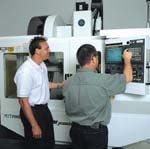
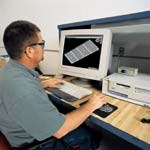
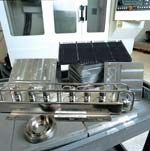








.jpg;maxWidth=300;quality=90)






